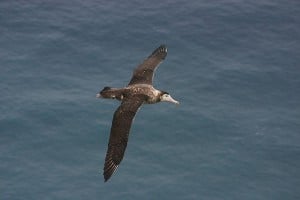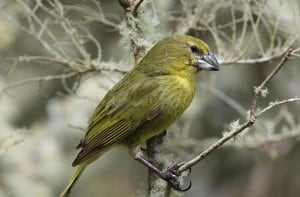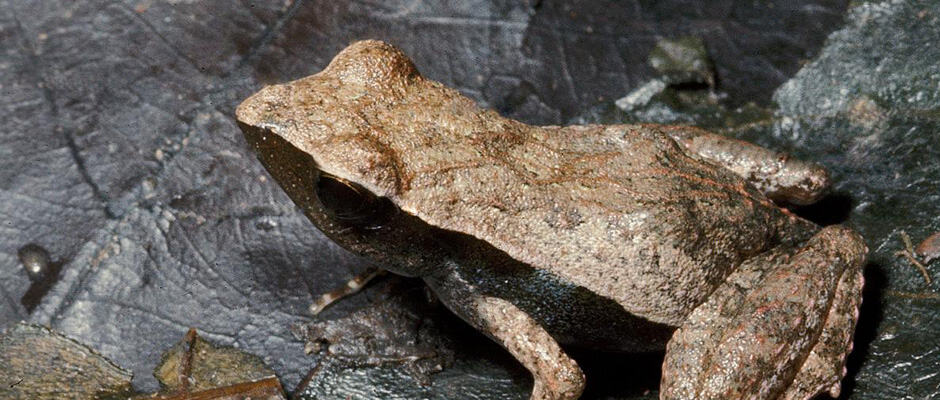Share this article
Fifteen Most At-Risk Species Have Low Survival Chance
Two Mexican rodent species as well as a number of birds and frogs rate among the 15 animal species with the lowest chance for survival in the world.
A new study found that a subset of around 841 highly threatened species around the world could be spared from extinction for around $1.3 billion a year. But the 15 species most at risk among these animals have a very low chance of survival even if conservation is improved.

The Amsterdam albatross only lives on the extremely remote Amsterdam Island in the southern Indian Ocean. It is among 15 species most at risk according to a new study.
Image Credit: Vincent Legendre
“Although the cost seems high, safeguarding these species is essential if we want to reduce the extinction rate by 2020,” said Hugh Possingham from The University of Queensland and coauthor of the study in Current Biology, in a release. “When compared to global government spending on other sectors — [for example] U.S. defense spending, which is more than 500 times greater — an investment in protecting high biodiversity value sites is minor.”
These 841 animal species are the ones listed by The Alliance for Zero Extinction. These animals are confined to single sites in the world and categorized as endangered or threatened by the International Union for the Conservation for Nature Red List.
“AZE sites are arguably the most irreplaceable category of important biodiversity conservation sites,” said Dalia A. Conde, lead author on the paper and assistant professor at the Max-Planck Odense Center at the University of Southern Denmark, in a release. “Conservation opportunity evaluations like ours show the urgency of implementing management actions before it is too late. However, it is imperative to rationally determine actions for species that we found to have the lowest chances of successful habitat and zoo conservation actions.”

The Wilkins finch lives only on two islands in two islands in the Tristan da Cunha archipelago in the British Overseas territory of Saint Helena. It is among 15 species most at risk according to a new study.
Image Credit: Peter Ryan
The researchers calculated the opportunities to protect remaining habitats of the 841 species as well as the possibility of creating protected insurance populations in zoos to come to the cost of conserving them.
“Our exercise gives us hope for saving many highly endangered species from extinction, but actions need to be taken immediately and, for species restricted to one location, an integrative conservation approach is needed.”
The 15 most at-risk animals include the Chiapan climbing rat (Tylomys bullaris) and the tropical gopher (Geomys tropicalis) native to Mexico. These 15 species face risks from urbanization, political instability in their habitat, lack of opportunity to establish captive breeding populations due to high costs or the paucity of information on them, and the high costs of protection and management in general.
Below is a complete list of the 15 species most at risk:
15 species with the lowest chances for survival in the wild and in zoos Amphibians
- Bay Lycian salamander, Lyciasalamandra billae, Turkey.
- Perereca Bokermannohyla izecksohni, Brazil.
- Campo Grande tree frog, Hypsiboas dulcimer, Brazil.
- Santa Cruz dwarf frog, Physalaemus soaresi, Brazil.
- Zorro bubble-nest frog, Pseudophilautus zorro, Sri Lanka.
- Allobates juanii, Colombia.
Birds
- Ash’s lark, Mirafra ashi, Somalia.
- Tahiti monarch, Pomarea nigra, French Polynesia.
- Zino’s petrel, Pterodroma madeira, Madeira.
- Mascarene petrel, Pseudobulweria aterrima, Reunion Island.
- Wilkins’s finch, Nesospiza wilkinsi, Tristan da Cunha.
- Amsterdam albatross, Diomedea amsterdamensis, New Amsterdam (Amsterdam Island).
Mammals
- Mount Lefo brush-furred mouse, Lophuromys eisentrauti, Cameroon.
- Chiapan climbing rat, Tylomys bullaris, Mexico.
- Tropical pocket gopher, Geomys tropicalis.
Header Image:
The tiny Physalaemus soaresi frog is endemic to Brazil and is among the 15 species most at risk according to a new study.
Image Credit: Ivan Sazima








